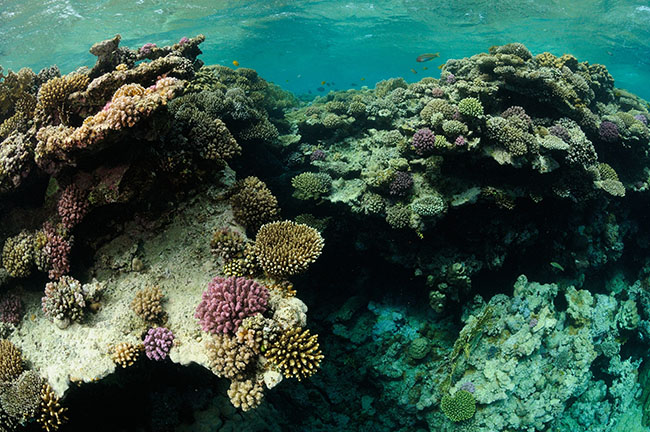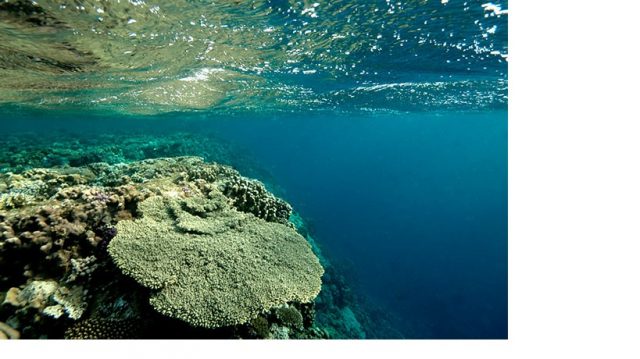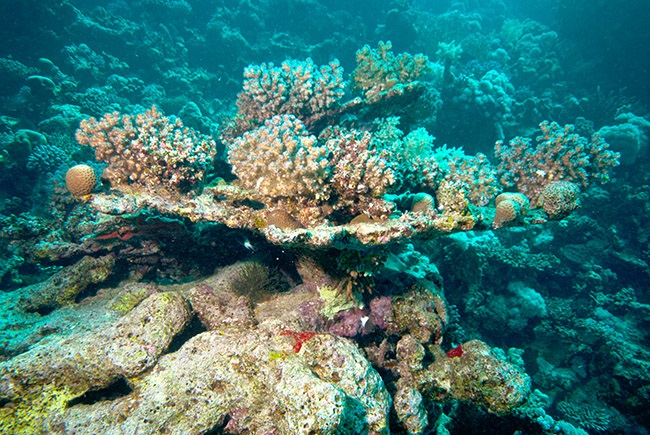[ad_1]
 Reefs are dynamic places, which is something I think we often forget. When looking at images of coral reefs or even experiencing them first hand, there is a tendency to assume they are unchanging and permanent; but they are, in actuality, moving, just very, very slowly. Here are some pictures to illustrate my point:
Reefs are dynamic places, which is something I think we often forget. When looking at images of coral reefs or even experiencing them first hand, there is a tendency to assume they are unchanging and permanent; but they are, in actuality, moving, just very, very slowly. Here are some pictures to illustrate my point:
Take a look at the Indo Pacific reef crest above, a perfect example of how the reef can change. Various species of coral are growing robustly on areas of once-thriving and now-dead tabulate acropora, with the whole structure shading out the corals below. At some point, when the growth reaches a certain weight, it will fall. Perhaps a storm, or simply time and gravity, will mean the reef’s rubble zone gets a new addition. And thus, this reef marches outwards into the ocean.

Another lovely Acro, doomed to fall when the next storm hits.
Down in the rubble zone, the fallen corals provide new areas for colonization. It’s commonplace to find fallen corals, later colonized by species able to tolerate the lower light intensities of deeper water.

This fallen acro landed the ‘right way up’. I’m not sure if it was dead and colonised or whether it became colonised after its fall.
Of course, aquarists know that corals grow, often quite rapidly. I just offer you my sympathy if your reef collapses into the depths of your tank.
[ad_2]
Source link
